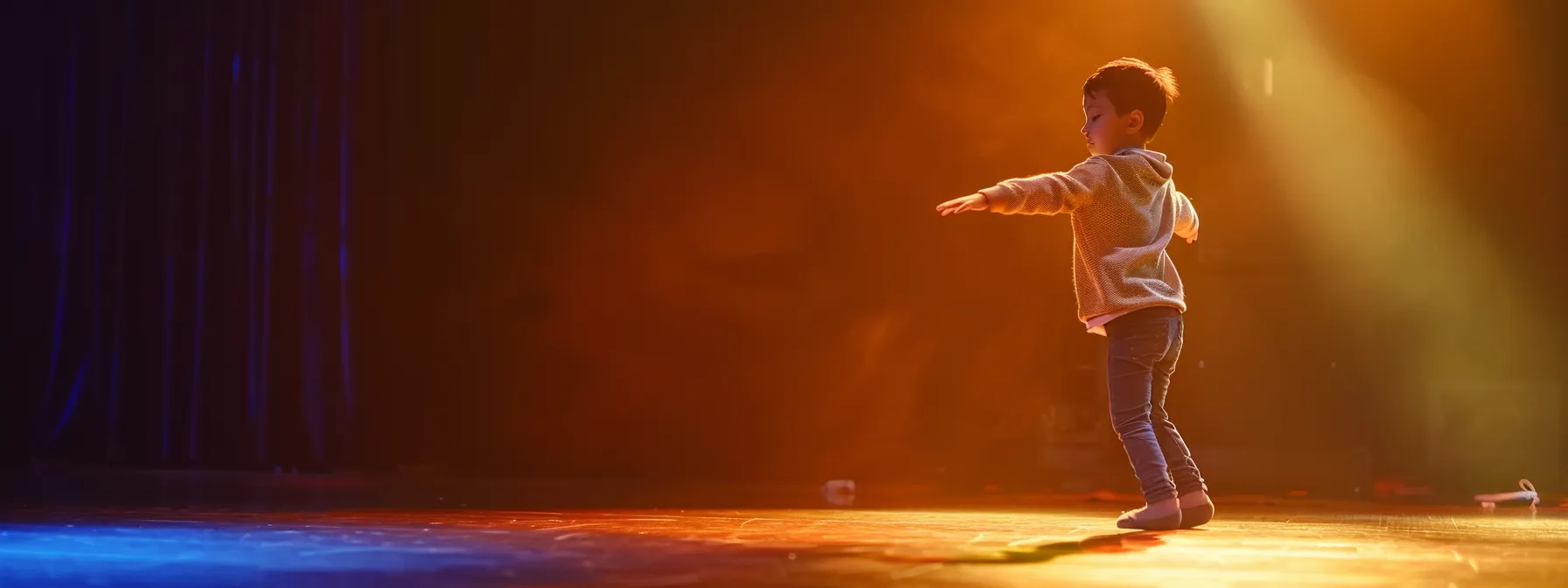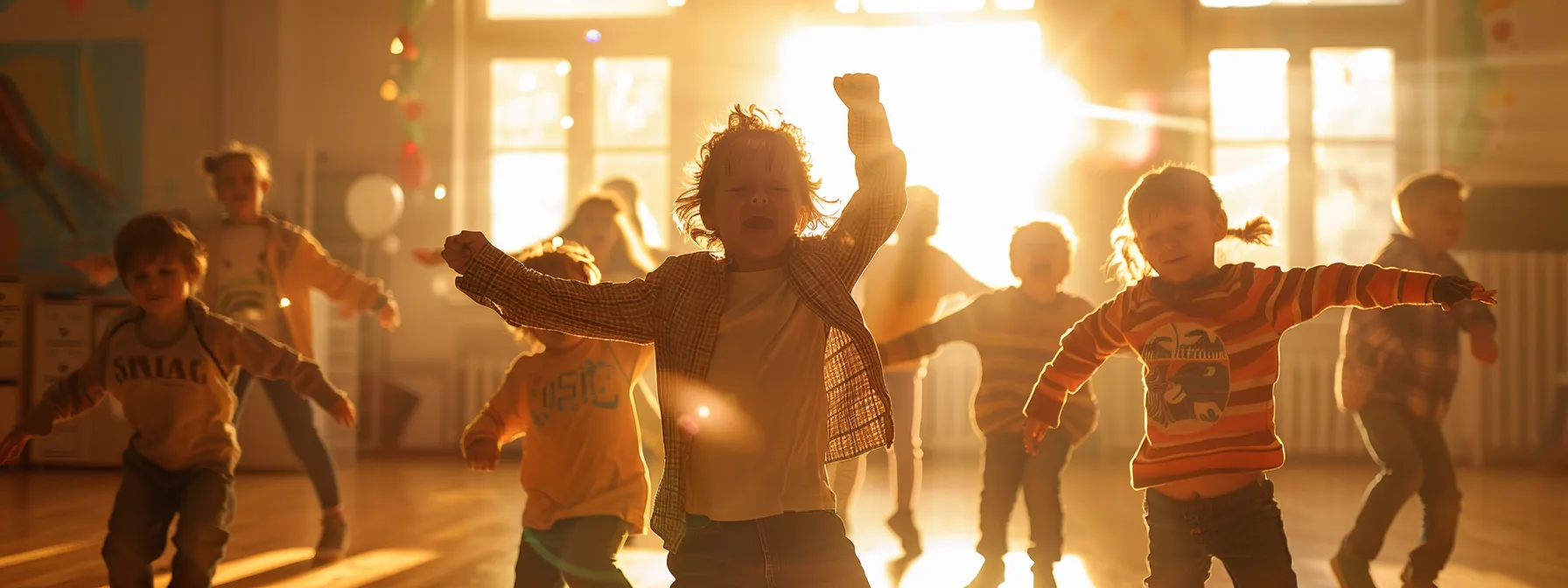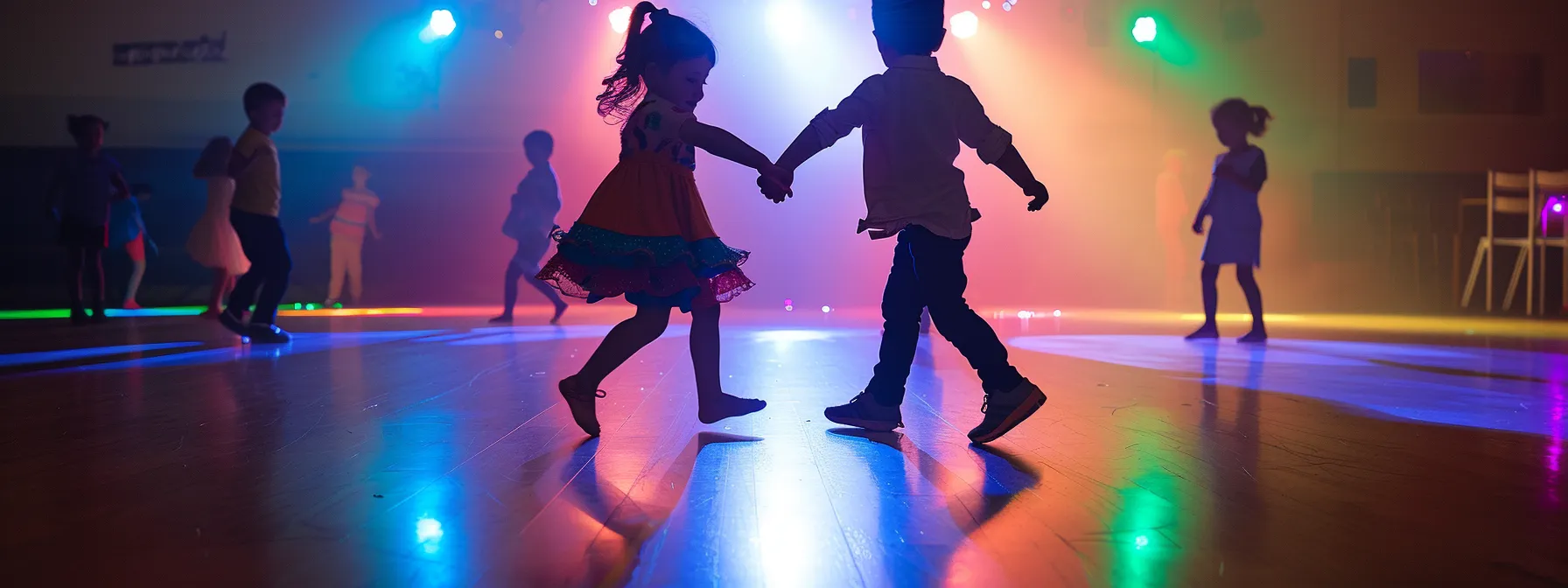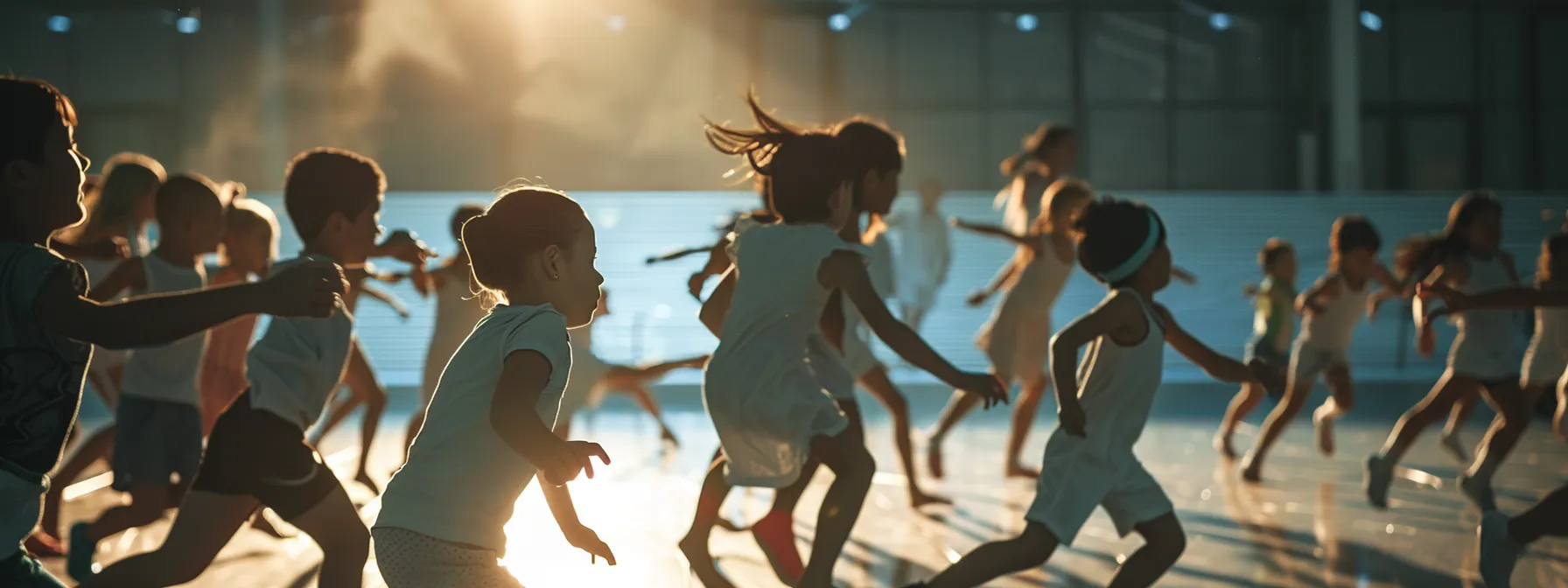
Movement Magic: 5 Dance Styles for Autistic Children
Movement Magic: Top Dance Styles for Children with Autism
Dance provides children on the autism spectrum with a therapeutic and accessible way to express themselves and build social connections. At Special Steps Dance Camp, we have seen firsthand how various forms of choreography positively impact children with disabilities. In particular, jazz and other inclusive dance styles offer not only artistic expression but also important reinforcement of social interaction and communication. Our Special Steps Merchandise collection, including our popular hoodie, supports this mission by promoting dance as an activity that is accessible to all children, regardless of their abilities.
In this article, we will explore five dance styles that offer significant therapeutic benefits for children on the autism spectrum. Keep reading to discover how these dance forms can serve as a powerful tool for your child's growth and happiness.
Key Takeaways
Ballet offers structured, gentle movements that help autistic children focus and express emotions
Hip hop dance provides energetic self-expression and improves motor skills for autistic children
Ballroom dancing enhances social skills and cognitive abilities through partner work and sequential learning
Folk dancing connects autistic children with cultural traditions and encourages inclusive group participation
Contemporary dance promotes sensory integration and body awareness through free movement exploration
Why Ballet Is a Top Choice for Autistic Children

Ballet stands out as a preferred dance style for autistic children, offering a structured and graceful approach to movement. This classical form combines gentle, flowing motions with the soothing power of music, creating an environment that supports focus and emotional expression. As autistic children engage in ballet classes, they discover a unique blend of physical discipline and artistic freedom that can significantly enhance their overall development. Support Special Steps by purchasing this hoodie
Building Focus With Gentle Movements
Ballet's gentle movements provide a structured framework for autistic children to build focus and concentration. The slow, deliberate motions of ballet require careful attention to detail, helping children develop their ability to concentrate on specific tasks and movements. Support Special Steps by purchasing this hoodie.
As children practice these graceful steps, they learn to control their bodies with precision, enhancing their spatial awareness and coordination. This increased body awareness often translates into improved focus in other areas of their lives, benefiting their overall development and daily interactions.
The Role of Music in Enhancing Emotional Expression
Music plays a vital role in dance therapy, offering children with disabilities a calming and structured environment to explore movement. At Special Steps, we incorporate music therapy into our programs, helping autistic children connect their physical actions with the emotional qualities of music. Support our nonprofit organization by purchasing from our Special Steps Merchandise, including our popular hoodie, and help us continue providing inclusive dance programs.
As children on the spectrum engage with different musical cues in various dance styles, they gain valuable knowledge about emotional expression. This understanding often carries over into other areas of life, empowering individuals to communicate more effectively. By offering these programs, we aim to provide children and their parents with the tools they need to thrive both inside and outside the dance studio.
While structured choreography offers a foundation, let's dive into how dynamic dance styles like hip hop energize and engage children on the autism spectrum.
Unlocking Creativity Through Hip Hop Dance

Hip hop dance offers autistic children a vibrant and energetic outlet for self-expression. This dynamic dance style combines rhythmic movements with upbeat music, creating an engaging environment that encourages creativity and builds confidence. As autistic children explore hip hop, they discover a unique blend of structured routines and freestyle elements that can significantly enhance their motor skills and emotional expression. The high-energy nature of hip hop dance provides an exciting platform for children to channel their energy and emotions in a positive way.
Encouraging Self-Expression in a Structured Environment
Hip hop dance offers children with disabilities a structured environment that promotes self-expression while ensuring accessibility. The combination of choreographed routines and freestyle components allows children with a disability to explore movement in a supportive framework. This balance helps them feel secure while engaging in dance, making it easier for them to participate and enjoy the process.
At Special Steps, instructors guide children through basic hip hop choreography, gradually introducing opportunities for personal interpretation. This approach reinforces their ability to participate in group activities while respecting individual preferences. As children engage with the structured sequences, they develop a deeper connection to the dance, which extends to their daily lives, offering a sense of achievement and personal growth.
Learning foundational hip hop choreography
Practicing routines in an accessible group setting
Exploring personal interpretation within structured sequences
Developing self-expression through guided movement
Applying newly developed skills to other aspects of life
Through programs like these, Special Steps emphasizes accessibility for individuals in special education and theatre settings. Hip hop dance, paired with music therapy, serves as a tool for reinforcing self-expression and encouraging active participation.
Using Rhythmic Beats to Improve Motor Skills
Hip hop's rhythmic beats provide a powerful tool for improving motor skills in autistic children. The strong, consistent rhythms create a structured framework for movement, helping children develop better coordination and body control. As they practice hip hop moves to these beats, children strengthen their gross motor skills and improve their overall physical awareness.
The repetitive nature of hip hop rhythms also aids in motor proficiency development. Children can practice movements repeatedly to the same beat, gradually refining their technique and building muscle memory. This process enhances their ability to perform complex motor tasks both in dance and in everyday life:
Matching movements to specific beats
Developing pace and timing skills
Improving coordination through repetitive practice
Strengthening gross motor skills
Enhancing overall body awareness and control
Dance styles intertwine, each offering unique benefits for body and mind. Let's waltz into the world of ballroom dance and discover its therapeutic power and music therapy benefits.
The Therapeutic Effects of Ballroom Dancing

Ballroom dancing offers autistic children a structured yet engaging way to develop social skills and cognitive abilities. This elegant dance style combines precise footwork with partner coordination, creating a unique environment that fosters social interaction and sequential learning. As autistic children explore the world of ballroom dancing, they discover a supportive setting that encourages cooperation while challenging their minds to master intricate step patterns. The formal nature of ballroom dance provides a clear framework for social engagement, helping children navigate interpersonal connections with greater ease and self-reliance.
Promoting Social Interaction and Cooperation
Ballroom dancing creates a unique social environment for autistic children to practice interpersonal skills. The partner-based nature of this dance style encourages children to interact with others in a structured setting, fostering cooperation and mutual understanding. As they learn to move in sync with a partner, children develop crucial social abilities such as nonverbal communication, turn-taking, and spatial awareness.
The formal etiquette of ballroom dancing provides clear guidelines for social interaction, helping autistic children navigate social situations with greater composure. Children learn to maintain appropriate physical boundaries, make eye contact, and respond to their partner's cues. These skills often translate to improved social interactions outside the dance studio, empowering children to engage more comfortably in various social settings.
Mastering Sequential Steps to Develop Cognitive Abilities
Ballroom dancing challenges autistic children to master sequential steps, enhancing their cognitive abilities. The structured nature of ballroom routines requires children to remember and execute specific movements in a precise order. This process strengthens their memory abilitiies and improves their capabiliity to follow complex instructions.
As children progress in ballroom dancing, they develop better sequencing abilities and problem-solving skills. Learning to anticipate the next step in a routine helps children improve their planning and organizational skills. These cognitive benefits extend beyond the dance floor, supporting academic performance and daily life tasks:
Memorizing dance sequences
Following multi-step instructions
Improving planning and organizational skills
Enhancing problem-solving abilities
Developing better sequencing skills
Folk dancing whisks us from elegant ballrooms to lush meadows and verdant forests. Nature's rhythms beckon dancers to explore new movements and connect with the earth beneath their feet.
Exploring Nature With Folk Dancing

Folk dancing introduces autistic children to a vibrant world of cultural traditions and natural rhythms. This joyful dance style celebrates community spirit and often draws inspiration from nature, making it an ideal choice for children who find comfort in the outdoors. As autistic children engage in folk dances, they experience a unique blend of storytelling through movement and group participation. The inclusive nature of folk dancing creates a welcoming environment where children can explore their heritage, develop social connections, and express themselves freely within a supportive community.
Connecting With Cultural Stories Through Movement
Folk dancing allows autistic children to connect with cultural stories through expressive movement. Each dance tells a unique tale, often inspired by historical events, legends, or everyday life in different communities. As children learn these dances, they absorb the rich cultural heritage embedded in each step and gesture.
The storytelling aspect of folk dancing engages autistic children's imagination and helps them understand complex narratives in a tangible way. By physically embodying characters or actions from cultural stories, children develop a deeper appreciation for diverse traditions and improve their ability to interpret and express abstract concepts. This embodied learning experience enhances their cultural awareness and emotional intelligence.
Fostering Group Participation and Inclusion
Folk dancing provides children with disabilities an excellent opportunity to participate in group activities and feel included in a welcoming, communal environment. The collective nature of folk dance, where participants often join hands and move in patterns, fosters a sense of unity. For autistic children, this creates a supportive space to engage socially, reinforcing group interaction in a fun and accessible way.
The inclusive spirit of folk dancing embraces diversity, allowing each child to participate at their own pace. With its focus on group movement rather than individual performance, this form of dance offers reinforcement of positive social behaviors. Autistic children can explore ballroom-style dances or transitions to contemporary movements, all while feeling supported by their peers. Through this inclusive environment, children engage in music therapy, using the dance experience to connect both physically and emotionally without pressure.
The fluidity of folk dancing allows for sensory exploration, especially when transitioning into other forms of dance, such as musical theatre or ballroom dance. This seamless blend of styles encourages a deeper connection to the music and movements, opening up new possibilities for personal and social growth.
Contemporary Dance as a Medium for Sensory Integration

Contemporary dance offers autistic children a unique platform for sensory integration and self-discovery. This fluid dance style encourages free expression and exploration of movement, allowing children to engage with their environment in new and meaningful ways. As autistic children immerse themselves in contemporary dance, they develop a deeper understanding of their bodies and the space around them. The emphasis on individual interpretation and creative movement provides a safe space for children to process sensory information and improve their body awareness. Through contemporary dance, autistic children can unlock their potential for expressive movement while simultaneously enhancing their sensory processing abilities.
Utilizing Free Movement to Explore Space and Texture
Contemporary dance encourages autistic children to explore their surroundings through free movement. This unrestricted approach allows them to interact with different textures and spaces, enhancing their sensory awareness. Children learn to navigate various surfaces and environments, developing a heightened sensitivity to their surroundings.
As they move freely, autistic children discover new ways to express themselves through their bodies. This exploration helps them process sensory information more effectively, improving their ability to interpret and respond to various stimuli. The open-ended nature of contemporary dance provides a safe space for children to experiment with different movement qualities, fostering Imagination and self-expression.
Enhancing Body Awareness and Control
Contemporary dance helps autistic children enhance their body awareness and control. Through guided improvisations and structured exercises, children learn to move with intention and precision. This increased awareness of their body's capabilities and limitations allows them to navigate their environment more effectively.
As children practice contemporary dance techniques, they develop a stronger mind-body connection. This improved connection enables them to better regulate their movements and respond to sensory input more appropriately. The result is greater physical control and coordination in daily activities, extending beyond the dance studio.
Frequently Asked Questions
How does dance help children with special needs?
Dance helps children with special needs by improving their motor abilities, coordination, and social interaction. Programs like those offered by Special Steps Nonprofit Organization use dance forms such as ballroom dance and musical theatre to create an inclusive, therapeutic environment, allowing individuals to express themselves and connect with others. Additionally, therapy integrated into these sessions supports emotional and developmental growth.
How to teach dance to an autistic child?
When teaching dance to an autistic child, it's essential to provide clear instructions and a structured environment. Dance styles like ballroom dance or musical theatre can be adapted by breaking movements into simple, repetitive steps, which helps reinforce understanding. Programs like those offered by Special Steps Nonprofit Organization focus on creating an inclusive atmosphere that caters to the individual needs of each child, fostering both participation and enjoyment.
Is dance class good for autistic child?
Yes, dance class can be highly beneficial for an autistic child. It offers a structured environment where individuals can develop physical coordination and social interaction. Programs like those offered by Special Steps provide inclusive classes, including ballroom dance, which support children in special education while also promoting overall well-being and mental health from a young age, even at the preschool level.
What is disability dance?
Disability dance refers to inclusive dance programs designed specifically for individuals with disabilities, ensuring they have the opportunity to participate and enjoy movement in a supportive environment. These programs, such as those offered by Special Steps, often include accessible dance styles like ballroom, catering to children and adults in special education settings. Disability dance promotes physical health, social interaction, and positive impacts on mental health for participants of all ages, including preschool children.
Conclusion
Dance offers autistic children a powerful medium for self-expression, sensory integration, and social development. Each dance style, provides unique benefits, from enhancing focus and motor skills to fostering creativity and cultural awareness. These dance forms create structured yet supportive environments where autistic children can explore movement, build confidence, and develop crucial life skills. By engaging in these diverse dance styles, autistic children unlock their potential for growth, empowering them to navigate the world with greater ease and self-assurance.